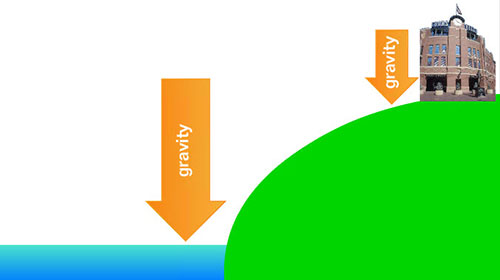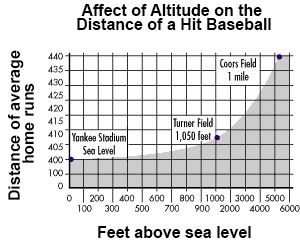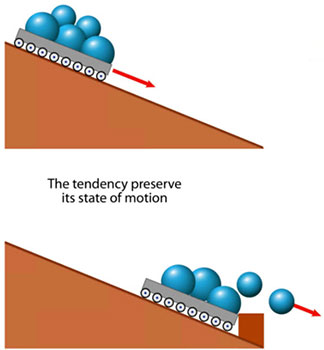Learn
Newton's First Law
To start this lesson off, begin with watching how Newton's first law of motion can be illustrated in two sports: golf and baseball!
- Newton's First Law of Motion (2:10). PBS login information.
- Science of Golf: Newton's First Two Laws of Motion (Watch from 0:00 to 1:13. We are only discussing the first law in this lesson, so stop when the video gets to the second law.)
The first law of motion states that an object in motion and an object at rest will stay in motion or at rest unless acted on by an unbalanced force. This is also called the inertia law.
This means that if an object, such as a golf ball or baseball that has been hit, is in motion, and there is no unbalanced force to pull it back down to earth or slow it down, then the object will continue to move until some unbalanced force changes it.
On earth, we experience the effects of gravity and friction, but Newton was able to think beyond these forces to what motion would be like in the absence of these kinds of forces.
Imagine you're bowling at a bowling alley. What forces are at work on the bowling ball?
- What forces are at work to move the bowling ball down the lane? Answer: a push from a person
- What forces are at work to slow down or stop the bowling ball? Answer: friction, the bowling pins, and the wall behind the pins
Forces and Baseball
Let's look at another example of how this law plays a role in baseball and not just the force it takes to hit the ball. What about how it affects whether or not the ball you hit is a homerun?
Why? Because an object in motion will stay in motion. Without gravity or air resistance, there is no other force acting on the baseball to pull it back down to Earth. So, if you want to hit a home run, just get rid of gravity!
If you are a baseball fan and are familiar with Major League Baseball, then you have heard of Coors Field in Denver, Colorado. What makes Coors Field so unique is that it is approximately one mile above sea level. (Remember, one mile is 5,280 feet. To put that in perspective, the highest point in Alabama is Cheaha State Park at 2,407 feet above sea level.) The closer you are to sea level, the more gravity (an unbalanced force) is working to pull things back to earth. When the Colorado Rockies first started playing at this field, there were more homeruns on that field than Major League Baseball had ever seen!

Entrance to Coors Field in Denver, Colorado
Why were there so many homeruns? Answer: Because Coors Field is up so high, the gravity is reduced, making homeruns much more likely.

Gravity at sea level is greater than gravity a mile above sea level, where Coors Field is located
The chart below details how much the altitude of one ballpark affects the distance of a hit baseball. The x-axis illustrates the number of feet above sea level, and the y-axis indicates the number of feet the average home run travels in each of the three ballparks listed on the chart.

The Coors Field (440 ft in average home run distance) averages 40 more feet in home runs than Yankee Stadium (400 ft in average home run distance), which sits at sea level.
It is not necessarily gravity alone that permits these huge homerun numbers. It is the fact that the air is so thin in Denver that there is little air resistance (which is a form of friction) acting on the ball.
What makes the air so thin? There is less gravity in Denver to hold the air molecules tighter together. What happens is the air spreads out more than normal and is thinner.
Objects at Rest and the Law of Inertia
So, we've looked at a baseball in motion but what about objects at rest?
The law of inertia is the property of matter that causes an object to resist change in motion. Just as when an object is moving it tends to remain moving, an object that is not moving (at rest) tends to remain still.
Either of these is true UNTIL something forces the object to do something else. You have to overcome an object's inertia in order for it to move meaning without enough force, the object will just keep doing whatever it was doing.
So what determines an object's inertia? Answer: an object's mass
In order to understand this law of motion, it is also important to note some basic principles that go along with it.
- An object's mass is a measure of its inertia.
- The more mass an object has, the greater its inertia.
- The greater an object's inertia, the more it resists change.

Some of the forces mentioned in this lesson were friction (air resistance) and gravity. These are two very effective forces when it comes to holding things in place or slowing things down.
Sir Isaac Newton was able to explain the nature of these forces in his first law of motion. In the next lesson, you will re-visit these and how they play a role in Newton's second law.
The less scientific way to sum up Newton's first law is things tend to keep doing what they were doing.